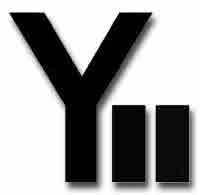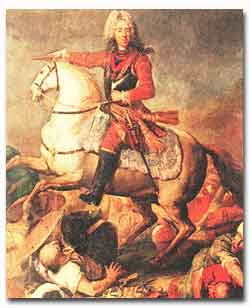|
Hear
from the Veterans:
Lt.Ludwig Bauer
Kurt
Gätzschmann
Accusations of murder:
Zloczow
Tarnopol
Für deutschen Text bitte hier.
After the annexation of Austria into the greater German Reich in 1938, the 9th Panzer Division was first activated as the 4th Light Division. In March 1939 the division participated in the occupation of Böhmen and Mähren (Bohemia and Moravia). In the same capacity the division fought in the campaign against Poland as of 1 Sep 1939. On 3 Jan 1940 the Division was redesignated to the 9th Panzer Division with the following order of battle:
9.Panzerdivision
Panzerregiment 33 (I., II.)
9.Schützen-Brigade
Schützen-Regiment 10 (I., II.)
Schützen-Regiment 11 (I., II.)
Aufklärungsregiment 9
I.Kradschützen-Abteilung
II.Aufklärungs-Abteilung
Panzerjäger-Abteilung 50
Artillerieregiment 102 (I., II.)
Pionier-Bataillon 86
Nachrichten-Abteilung 85
During the campaign against France in 1940, the Division was first employed in Holland at Rotterdam and then in France via Amiens to Dünkirchen, Calais, and Bologne. In the second phase the Division fought south of Amiens up to the vicinity of Lyon. After returning to garrison in the Vienna area for refitting, the Division was mobilized via Hungary to Romania where she participated in the campaign in the Balkans as of 6 Apr 1941. Via Skopje the Division ended its campaign at Larissa whereafter it returned once again to Vienna for refitting. As of 9 Jul 1941 the 9th Panzer Division participated in the invasion of Russia in the southern sector. Individual stations during the drive into Russia included Tarnopol, Shitomir, southern Kiew, Kriowi-Rog, Saporoshje, Dnepropetrowsk, Kremetschug and eastern Kursk. Winter garrison was made at Schtschirgy 1941/42. In the summer 1942 the drive continued to Woronesch, albeit a Russian counterattack from the north forced the engagement of the 9th Panzer Division along the Shisdra north of Orel. Continued employment was found at Gshatsk, Sytshewka and Rshew. During early 1943 the Division was refitted south of Orel
9.Panzerdivision
Panzerregiment 33 (I.)*
Panzergrenadierregiment 10 (I., II.)
Panzergrenadierregiment 11 (I., II.)
Panzeraufklärungs-Abteilung 9
Panzerjäger-Abteilung 50
Panzerartillerieregiment 102 (I., II., III.)
Heeresflakartillerie-Abteilung 287
Panzerpionier-Bataillon 86
Brückenkolonne K
Panzernachrichten-Abteilung 85
Feldersatz-Bataillon 60
On 5 Jul 1943, south of Orel, the Division participated in the large-scale offensive "Citadel." The attack did not succeed. After a single engagement northwest of Orel the Division was then committed in Sep 1943 at Achtyrka, Poltawa, Krementschung, Kriwoi-Rog, Apostlowo and Wosnassensk. By February/March 1944 the Division was relieved from duty on the Russian Front and transferred to Southern France. A single Kampfgruppe (Task Force) was left behind in the East until May 1944. The Division was refitting in the area of Nimes whereby the 155th Reserve Panzer Division was absorbed into the Division. At the end of Jul 1944 the Division was transferred to the Normandy sector where she participated in the difficult defensive battles along the Dom Front and provided security for the right flank. The subsequent fighting withdrawal was made over Alencon in the area south of Paris, in order to secure the city from the south. The continued withdrawal was made over Metz, south of Aachen, where combat-ready troops were committed into action while neigboring units were being refitted and replaced. The Division was engaged in additional fighting that took place at Arnheim and Venlo in Holland, north of Aachen. At the end of December the Division also participated in the Ardennes counteroffensive as the right flank of the 5th Panzer Army (Manteuffel). The Division reached Köln, by the way of the Belgian villages Prüm, Scleiden, and Düren, where a bridgehead was established. After hard fighting and having to give up the bridgehead, the Division was caught in the Ruhrpocket in March 1945, where she was also destroyed in April near Iserlohn.
* From Jan 1943 - Jan 1944, the II.Abteilung was committed as the 51rst Panzerabteilung (von Lauchert), attached to the Grossdeutschland Division. Click here for the history on the 51rst Panzerabteliung.
Commanders of the 9th Panzer Division
Gen.Maj.Dr.Alfred
Ritter von Hubicki(1.Mar.1940-31.Jul.1940)
Gen.Lt.Dr.Alfred Ritter von Hubicki (1.Aug.1940-25.Apr.1942)
Gen.Maj.Johannes Baessler (15.Apr.1942-25.Juli 1942)
Oberst Heinrich-Hermann von Hülsen (25.Juli 1942-4.Aug.1942)mFb
Gen.Maj.Walter Scheller (4.Aug.1942-31.Dec.1942)
Gen.Lt.Walter Scheller (1.Jan.1943-22.Jul.1943)
Oberst Erwin Jollasse (22.Jul.1943-30.Sept.1943)
Gen.Maj.Erwin Jollasse (1.Okt.1943-19.Apr.1944)
Gen.Lt.Erwin Jollasse (2o.Apr.1944-16.Sep.1944)
Oberst Max Sperling (16-23.Sept.1944)
Gen.Maj.Harald Frhr.von Elverfeldt (24.Sept.1944-28.Feb.1945)mFb
Gen.Lt.Harald Frhr.von Elverfeldt (1-6.Mar.1945) KIA
Oberst Hans von Hoefer (6-10.Mar.1945)
Oberstleutnant Hanisch (10-18.Mar.1945)
Oberst Helmut Zollenkopf (18.Mar.1945-26.Apr.1945)mFb
Primary documents and records for the 9th Panzerdividion.

